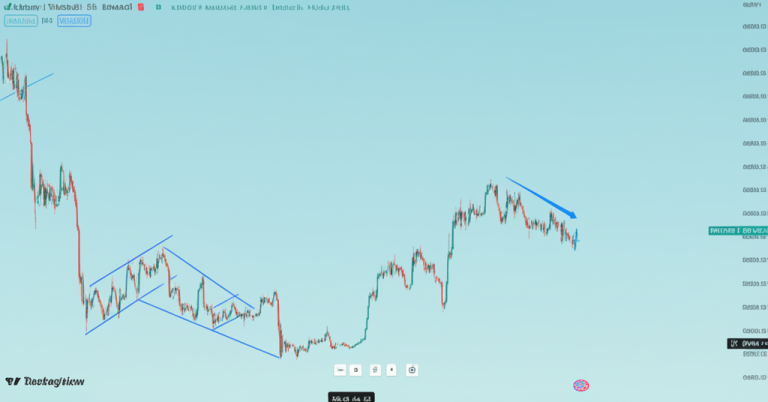A New Era for Bitcoin Under Trump’s Crypto Agenda
Policy Foundations: Strategic Reserves and Regulatory Clarity
The Trump administration’s first 100 days saw unprecedented crypto-focused executive orders. The establishment of a Strategic Bitcoin Reserve—holding 200,000 confiscated BTC—anchors Bitcoin as a commodity akin to gold. This reclassification eliminates securities-related ambiguities, streamlining compliance for exchanges and institutional investors.
Concurrently, a second reserve for Ethereum, Solana, and XRP signals broader acceptance of digital assets. The prohibition of a U.S. CBDC further entrenches decentralized networks as alternatives to government-controlled currencies.
Market Mechanics: Price Volatility Amid Institutional Moves
As of May 4, 2025, Bitcoin trades at $95,491, with intraday swings between $95,316 and $96,497. Despite a slight 24-hour dip (-0.88%), its $1.9 trillion market cap underscores dominance. Galaxy Digital’s Alex Thorn now predicts rising odds of direct U.S. BTC purchases in 2025—a shift from earlier forecasts—citing logistical progress on reserve management.
Key metrics:
| Factor | Detail |
|————————–|————————————–|
| Circulating Supply | 19.86M BTC (94% mined) |
| Trading Volume (24h) | $15.85B |
| Institutional Sentiment | Bullish on strategic reserves |
Political Catalysts: The Trump Family’s Crypto Advocacy
Eric Trump and Donald Trump Jr. will speak at the Bitcoin Conference on May 27-29, focusing on capitalism and financial sovereignty. Eric recently joined the Metaplanet board (Japan’s largest BTC holding company), advocating for BTC as a real estate hedge; Donald Jr. emphasizes the role of decentralized technology in protecting citizen freedoms. Their involvement further pushes Bitcoin into mainstream political narratives.
Additionally, the Trump team’s launch of the TRUMP and MELANIA meme coins, though controversial, highlights the instrumentalization of crypto assets during election cycles. This strategy both solidifies populist support and tests regulatory boundaries.
Regulatory Landscape: Balancing Innovation and Oversight
The regulatory environment is evolving rapidly. The U.S. Securities and Exchange Commission (SEC) has indicated a more accommodating stance towards Bitcoin ETFs, potentially unlocking billions in institutional capital. Simultaneously, the Commodity Futures Trading Commission (CFTC) is expanding its oversight of crypto derivatives, aiming to curb market manipulation without stifling innovation.
Internationally, the U.S. is engaging with global standards set by the Financial Action Task Force (FATF), ensuring that crypto regulations align with anti-money laundering (AML) and counter-terrorism financing (CTF) protocols. This global coordination is crucial for maintaining the integrity of the crypto market and fostering international trust.
Technological Advancements: Scalability and Security
Technological progress is another pillar of Bitcoin’s rising prominence. The Lightning Network, a layer-2 solution, has significantly improved transaction speeds and reduced costs, making Bitcoin more viable for everyday use. Additionally, advancements in quantum-resistant cryptography are addressing long-term security concerns, ensuring that Bitcoin remains resilient against future technological threats.
The integration of Bitcoin into smart contracts and decentralized finance (DeFi) platforms is also expanding its utility. Projects like RSK and Stacks are enabling complex financial operations on the Bitcoin blockchain, further blurring the lines between traditional finance and crypto assets.
Economic Implications: Bitcoin as a Global Reserve Asset
The inclusion of Bitcoin in strategic reserves has profound economic implications. It challenges the dominance of the U.S. dollar and other fiat currencies, potentially leading to a more diversified global reserve system. Central banks worldwide are closely watching these developments, considering how to incorporate digital assets into their monetary policies.
For emerging economies, Bitcoin offers a hedge against inflation and currency devaluation, providing a stable store of value. Countries like El Salvador have already adopted Bitcoin as legal tender, setting a precedent for others to follow. This trend could reshape global economic dynamics, with Bitcoin playing a central role in international trade and finance.
Risks Ahead: Volatility vs Long-Term Vision
Despite the policy tailwinds, Bitcoin’s volatility remains a significant risk. The establishment of strategic reserves could lead to short-term selling pressure as governments liquidate confiscated assets. The ban on a U.S. CBDC might also intensify friction with traditional financial institutions. However, the long-term impact of integrating Bitcoin into national reserve systems is substantial—it could reshape global foreign exchange reserves and accelerate the digitalization of fiat currencies.
Conclusion: Bitcoin at an Inflection Point
The Trump administration’s crypto policies are rewriting the rules: through strategic reserves, family endorsements, and regulatory easing, Bitcoin has transitioned from a fringe asset to a national strategic tool. While price volatility persists, institutional adoption marks a pivotal shift in the crypto landscape. For investors, this era presents both historic opportunities and challenges in risk management—navigating policy benefits and market sentiment will be crucial in the coming years.
資料來源:
[3] bitcoinist.com
[5] cryptorank.io
Powered By YOHO AI





